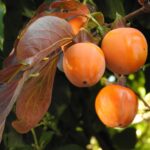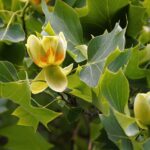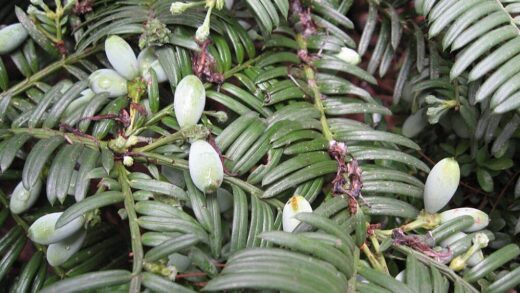The American tulip tree, scientifically known as Liriodendron tulipifera, is one of the most imposing deciduous trees of eastern North America, justifiably popular as an ornamental tree worldwide. Its characteristic four-lobed leaves, unique tulip-like flowers, and brilliant golden-yellow autumn foliage represent an unparalleled aesthetic value in gardens and parks. However, for this majestic plant to display its most beautiful form, it is essential to understand and provide its optimal living conditions, among which the most critical factor is the right amount of light. A thorough knowledge of its light requirements is the key to its successful cultivation, as this determines its growth vigor, the density of its canopy, its tendency to flower, and its overall health.
This tree species, in its natural habitat in the mixed deciduous forests of the Appalachians, often behaves as a pioneer species. This means it is among the first to colonize sun-rich areas cleared by forest fires, storms, or logging. Its ecological strategy is based on rapid growth and winning the competition for light. This innate characteristic fundamentally defines its relationship with light, as it is a distinctly light-demanding, or heliophilic, plant. Although young seedlings tolerate some partial shade, abundant sunlight is indispensable for their development and strengthening.
The tulip tree’s light requirement is not merely a preference but a biological necessity. The photosynthesis that occurs in its leaves, which produces energy for the plant, is extremely efficient but requires high-intensity irradiation to do so. The right amount of light ensures the energy surplus that allows for the species’ characteristic, extremely rapid growth, which can exceed one meter per year. Without this, the tree remains stunted and is unable to fulfill the dominant role in its environment for which it is genetically programmed.
Therefore, when designing a garden and planting, considering the tulip tree’s light requirements is a crucial aspect. In a poorly chosen, shady location, the tree will not only grow more slowly, but its canopy will also be sparse and thin, and it will most likely never produce flowers. In the following chapters of this article, we will examine in detail how the tree’s light requirements change during its various life stages, what biological processes lie behind them, and what practical advice is worth following for successful planting and care.
Specifics of a young age
In the initial stages of its life, the tulip tree shows some adaptability regarding light, which stems from its aforementioned pioneer character. Seedlings and young saplings can survive and begin to grow in the understory of an existing forest, where the canopy casts partial shade on them. This tolerance, however, is only a temporary state, a kind of survival strategy until the tree gathers enough energy to break through to the light. At this stage, their growth is slower, and they direct all their energy to vertical, height growth, to reach the sunnier canopy level as quickly as possible.
More articles on this topic
This initial shade tolerance allows it to successfully regenerate in nature in the gaps created by a fallen tree. The young tree awaits its opportunity, and as soon as a gap opens in the canopy, it immediately begins vigorous growth to overtake its competitors. It is important to understand that this ability does not mean the young tree “likes” partial shade. It merely tolerates it for a time, but for true, vigorous development, even at this age, abundant, preferably all-day, sunshine is the most ideal.
If the young sapling remains in deep shade for too long, it begins to show characteristic symptoms. Its shoots become elongated, thin, and weak, a phenomenon called etiolation. Its leaves may become larger but with thinner tissue, trying to maximize the capture of the little light, and the stem desperately reaches for the sky, while the trunk’s thickening lags behind. Such a young tree, suffering from a lack of light, becomes much more vulnerable to diseases and pests, and its winter hardiness may also decrease.
Therefore, for young specimens purchased from a nursery, the wisest decision is to plant them in their final, sunny location from the very beginning. Although a young tree can survive in the partial shade of a larger tree or on the north side of a building, this compromise comes at the expense of its development. For an optimal start, we should choose a place for it where the sun reaches it for at least 6-8 hours a day, thus ensuring strong root and trunk development, which is the foundation of future stability and health.
The light requirements of the mature tree
As soon as the American tulip tree reaches maturity and takes its place in the canopy level, its light requirements become absolute and unquestionable. At this stage, the tree no longer tolerates shade but actively seeks the light to maintain its dominant position. Full sun is essential for it so that the photosynthesis that supplies its huge canopy with energy can operate at maximum efficiency. A mature tulip tree requires undisturbed, full-spectrum sunlight for most of the day.
More articles on this topic
The shape and habit of the tree also reflect its relationship with light. When grown as a solitary specimen, for example in a spacious park or garden, the tulip tree develops a magnificent, broad, conical or pyramidal canopy. In this case, the lower branches also receive enough light, so the foliage remains dense and closed right down to the base of the trunk. In contrast, when growing in a forest, in a denser stand, the tree develops a slender, very tall, and remarkably clear trunk, and its canopy spreads out only in the uppermost region, rising above the other trees. This phenomenon, so-called self-pruning, is the tree’s natural reaction by which it gets rid of superfluous, shaded lower branches.
The amount of light also has a direct impact on flowering, which is one of the tree’s main ornamental values. The tulip tree flowers abundantly only if its canopy receives sufficient, intense sunlight. On the branches on the shady or partially shaded side, significantly fewer, or no, flower buds develop. This is why a tree forced into a shady spot, even if it survives, will rarely or never delight us with its special, yellowish-green flowers, adorned with an orange spot.
In practice, this means that the most ideal location for a mature tulip tree is an open, spacious area where nothing restricts its access to sunlight. When planting, one must think ahead and consider the future shading from surrounding trees and buildings. If other trees grow over its canopy or a new building shades it, the state of the tulip tree will begin to deteriorate rapidly, which will manifest in the thinning of the canopy, the dieback of branches, and the absence of flowering.
The relationship between light and photosynthesis
To understand the exceptional light requirement of the tulip tree, it is worth taking a look into the depths of plant physiology, specifically the process of photosynthesis. This biochemical reaction series is the basis of almost all life on Earth, during which the plant converts light energy into chemical energy, i.e., sugars. The tulip tree, as a fast-growing species, is particularly efficient in this process, but it requires a large amount of “fuel,” i.e., sunlight, to do so. The chlorophyll molecules in its leaves absorb the light energy, especially in the red and blue spectrums, which initiates the conversion of carbon dioxide and water.
Different plant species are able to utilize light to varying degrees. The tulip tree belongs to the plants with a high light saturation point. This means that the rate of its photosynthesis continuously increases even at very high light intensities and reaches the saturation point, where it can no longer use more light, only at very strong irradiation. In contrast, shade-tolerant plants reach their maximum photosynthetic capacity already at low light intensities, and strong sunlight can even damage them. The tulip tree, therefore, “outperforms” in sunny locations.
An interesting adaptation is that even within a single tree, differences in leaf anatomy can be observed. The leaves in the upper, sun-exposed part of the canopy are typically thicker, with a smaller surface area and more cell layers to protect against excessive UV radiation and water loss. The leaves in the lower, more shaded parts, on the other hand, are thinner and have a larger surface area to collect the filtered, weaker light as efficiently as possible. This internal differentiation also shows the tree’s perfect adaptation to light conditions.
This outstanding photosynthetic efficiency is the explanation for the species’ characteristic, extremely rapid growth. The immense amount of sugar produced in abundant sunlight provides the energy not only for life support but also for rapid cell division, the thickening of the trunk and branches, the establishment of an extensive root system, and the continuous renewal of the canopy. In low-light conditions, the tree’s energy production decreases, forcing it to limit its scarce available resources to the most necessary life functions, and growth and reproduction are pushed into the background.
The harmful effects of insufficient light
When a fundamentally light-demanding plant, like the American tulip tree, does not get the amount of light it needs, it has numerous, clearly visible and harmful consequences. The most conspicuous symptom is the already mentioned etiolated, or spindly, growth. The tree strives with all its might to reach the light source, which results in thin, weak, disproportionately long shoots. The canopy becomes sparse and transparent, the tree loses its compact, dense form, and becomes a weak, sickly-looking individual.
Lack of light not only spoils the growth form but also drastically reduces the aesthetic value of the foliage. The color of the leaves can be paler, yellowish-green, lacking the healthy, deep green tone. The most spectacular damage, however, is the absence of autumn coloration. One of the most attractive features of the tulip tree is its pure, brilliant golden-yellow autumn color, which develops in its full splendor only if the leaves receive abundant sunlight at the end of summer and the beginning of autumn. In shady places, the autumn color becomes a dull, pale yellowish-brown, or may be completely absent, and the leaves simply dry up while remaining green.
Prolonged lack of light undermines the vitality of the entire tree and makes it more susceptible to various stress factors, diseases, and pests. The immune system of a weakened, energy-deficient tree does not function properly. Thus, it can be more easily attacked by aphids, which are fond of the tulip tree anyway, as well as by various fungal diseases, such as the pathogens that cause leaf spot or canker. The tree does not have sufficient energy reserves to defend itself effectively or to recover from a possible injury.
Finally, but not least, lack of light also makes the tree’s reproductive ability impossible. Flowering and fruit production are extremely energy-intensive processes that the tree can only “afford” if it has an abundant energy surplus. In shady conditions, the tulip tree focuses on survival and does not waste its energy on growing flowers. Therefore, from a tulip tree planted in the shade, we would wait in vain for its characteristic and beautiful flowers, because the conditions for starting the reproductive cycle are simply not there.
Practical advice for planting
The basis for the successful cultivation of the tulip tree is careful planning and the selection of the right location, which above all means satisfying its light requirements. The most important practical advice is to designate the sunniest, most open part of the garden or park for it. Look for a place where the sun reaches the tree for most of the day, but at least 6-8 hours, especially at midday. Think about the future as well: consider the growth of surrounding trees and buildings, and possible future constructions that could shade your tree.
An important aspect is the final size of the tree. The American tulip tree is a species that grows to a huge size, reaching a height of 25-30 meters and a canopy diameter of 10-15 meters over decades. Therefore, do not plant it too close to buildings, overhead lines, or other trees. If planted as a solitary specimen, i.e., alone in the middle of a spacious lawn, it can develop its most beautiful, symmetrical form, with a canopy reaching down to the ground. This is the most ideal placement for it, because it receives light unobstructed from all directions.
If you want to plant several tulip trees, for example as part of an avenue or a small grove, keep an appropriate planting distance of at least 10-12 meters between them. This distance ensures that the canopies of the trees in their adult age do not shade each other too much, thus preventing excessive competition and the thinning of the lower parts. Too dense planting results in weak, unstable, spindly individuals, which are much more exposed to storm damage.
Finally, although the tulip tree does not require regular pruning, shaping the canopy or removing damaged branches can also be aimed at improving light conditions. By removing the lower branches, for example, more light can reach under the trunk, allowing for the planting of other plants or simply improving visibility. The essence, however, is not correction by pruning, but prevention: by choosing the right planting location, we can ensure that this wonderful tree will be the jewel of our garden for decades, shining in its full glory in the abundant sunlight.




















